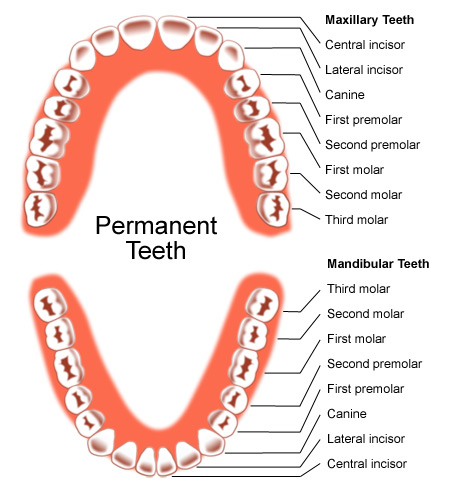Composition Of A Tooth

What do you know about your teeth?
Your teeth begin to grow while you are still a baby in your mother's womb. Although they are visible only a few years after birth, when they appear or leave the gums, they are there. Tooth or primary teeth grow and fall in the same order and are replaced by permanent teeth or adult teeth. Your permanent teeth will be the teeth you will have for the rest of your life. If you lose a tooth that has grown, you can attach it to the root if you immediately see a dentist. In many cases, a lost permanent tooth means that a false tooth, such as a dental implant, is needed to replace the lost natural tooth.
Your teeth are resistant to wear, grinding and pressure. What makes teeth so hard and durable? It probably has something to do with their composition.
Each tooth is made of enamel, dentin and cement and each tooth has an eraser.
Dental enamel
The part of the teeth that you know best is tooth enamel. It is the hard, transparent outer layer of the tooth. It is this part of the tooth that can destroy the holes and make the tooth vulnerable to decay and disease. Enamel is the heaviest and most mineral substance in the body. Dental enamel is mainly made up of minerals, organic compounds and water. The enamel is the thickest (and the strongest) on the edge of the tooth and is the weakest along the edges of the tooth.
As we age, over the years of use, abuse and wear, enamel is slowly developing into what is called stall.
What is email composed of? Crystalline calcium phosphate, called hydroxyapatite, is responsible for most minerals found in tooth enamel. These minerals give teeth their strength and fragility. The enamel does not contain collagen, unlike other parts of the tooth. Tuftelins, ameloblastins, ameloblenins and enamelins are proteins that help to develop enamel.
Dentin
Under the glaze is a yellowish and porous material called dentin. It is this material that gives the teeth their classic yellow or preferably white color. Dentin is composed of inorganic and organic materials as well as water. It is made from mineralized connective tissue and collagen proteins. Dentinogenesis, or the process of dentin formation, involves the excretion of dental pulp by the odontoblasts. Dentin contains a matrix of microscopic tubules that do not cross. The length of the tubules is determined by the radius of a person's tooth. Dentin is the substance between enamel or cement and the pulp chamber.
Although dentin is not as strong as enamel, it gives your teeth more strength, support and protection. Because it is softer than varnish, it deteriorates faster and is subject to serious cavities if not treated properly, but dentin still acts as a protective layer and supports the top of the tooth.
Cementum
The inner layer of the tooth is called the cementum. This part of the tooth looks like a bone and covers the gums. Like tooth enamel and dentin, cement is composed of inorganic (mainly hydroxyapatite), organic (usually collagen) and water substances. Cement is softer than enamel and dentin and is secreted by the cementoblasts at the root of the tooth. It also has a yellowish color and is thicker at the top of the root of the tooth. This part of the tooth is a medium through which the periodontal ligaments (ligaments of the gums) adhere to the tooth, so that it remains stable.

Dental pulp
The pulp is in the middle of each tooth. The pulp consists of connective tissue containing nerves and blood vessels. The dental pulp provides the blood of the teeth and the nutrients, as well as macrophages and T lymphocytes fighting infections. It is in the pulp that odontoblasts that make dentin are found, as well as nerve endings, that allow the tooth to react to food and hot or cold drinks.
The teeth are simple but complex, which makes them strong and durable. However, they are vulnerable to injury from attrition, disease and degradation due to poor oral hygiene. Certain dental conditions, such as tooth sensitivity, may indicate that something is wrong and that you should consult your dentist.
Composition Of A Tooth blog is very informative for all, especially for those who love with reading.
I hope you are all satisfy and enjoy reading during reading Composition Of A Tooth.
Please informed me that my blog is informative or not for you, write a comment blow comment box.
Thanks for reading Composition Of A Tooth.



